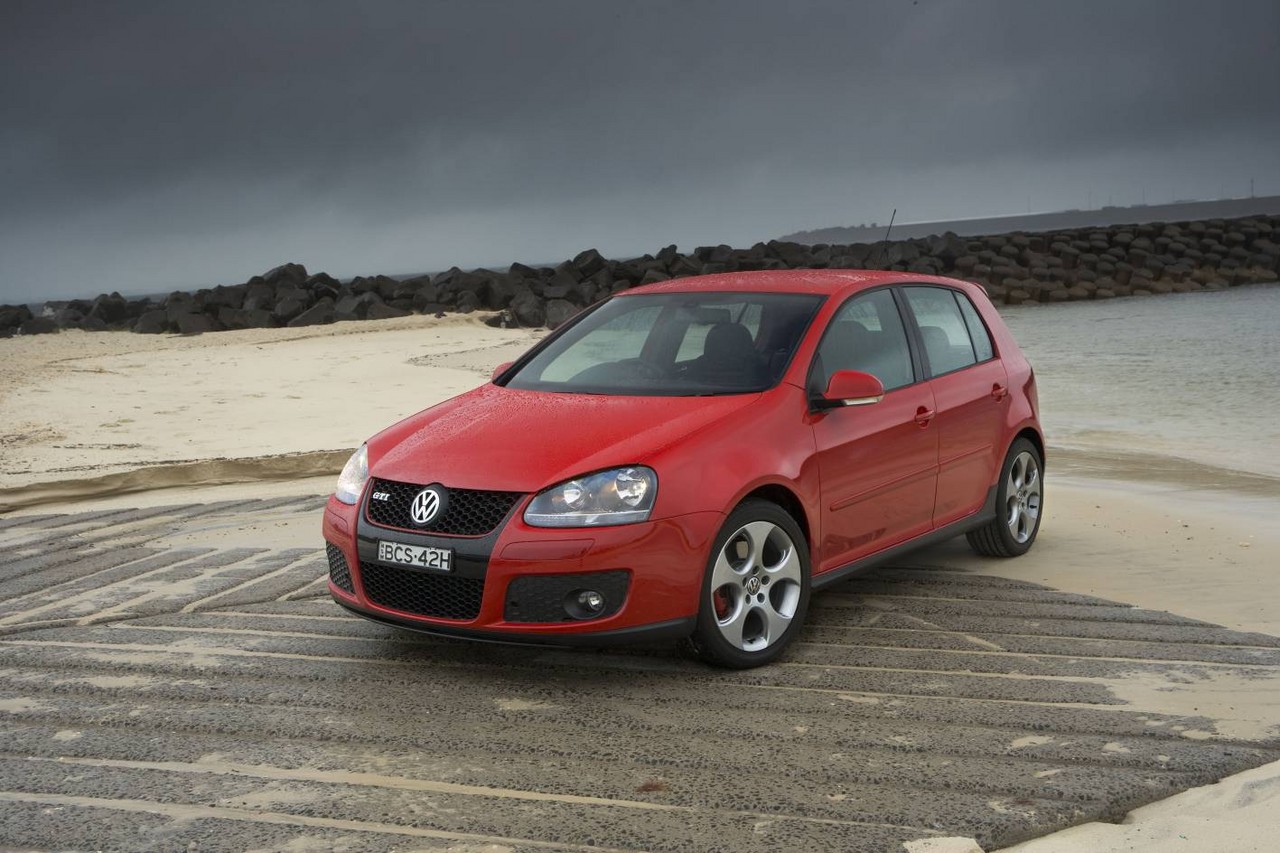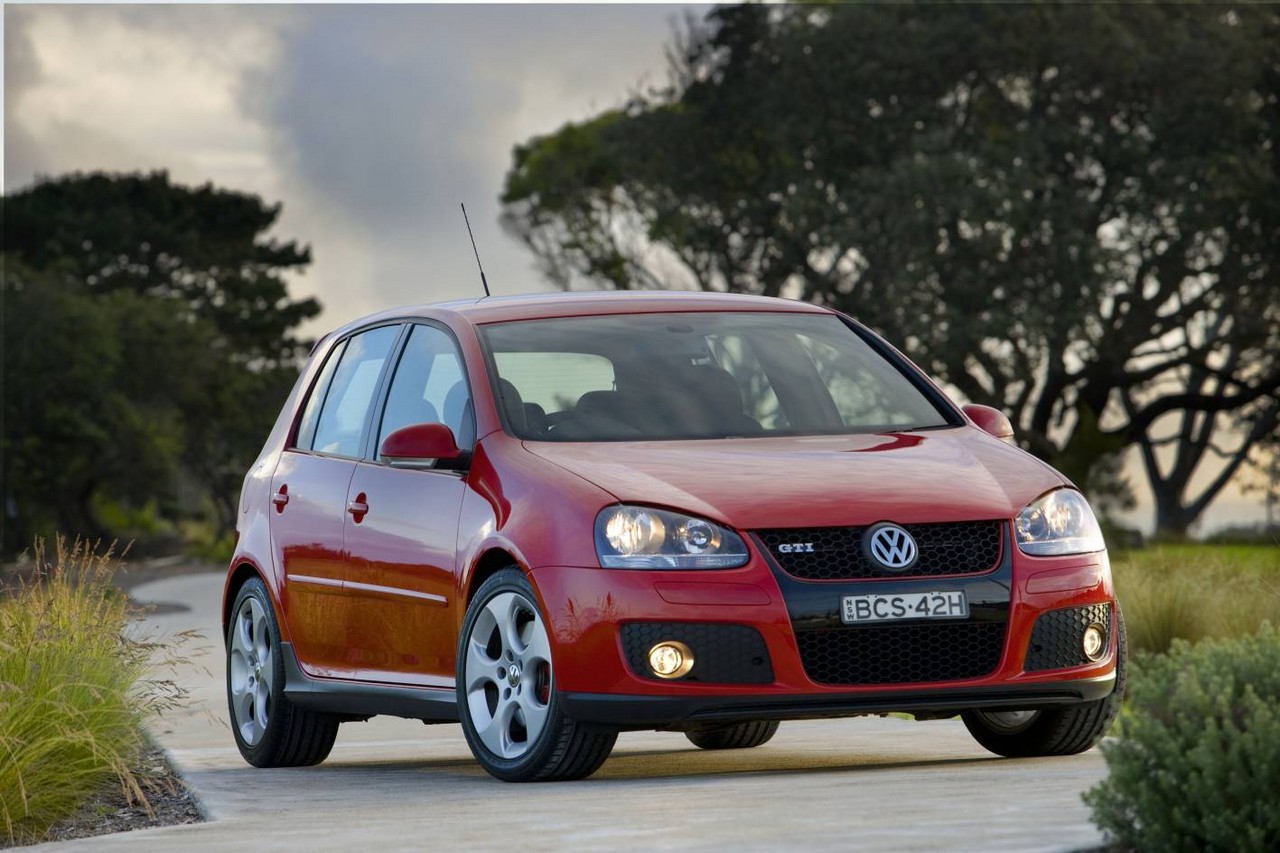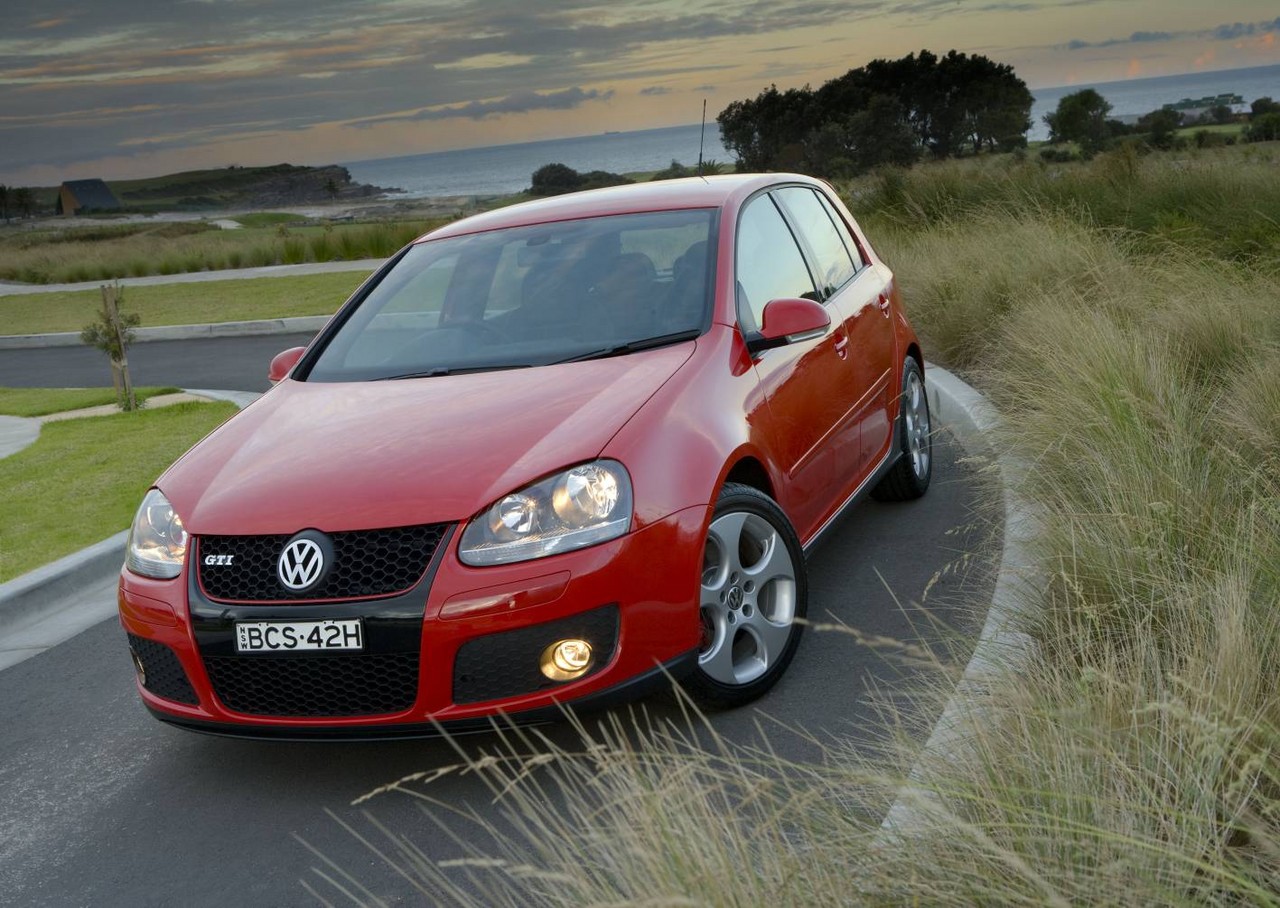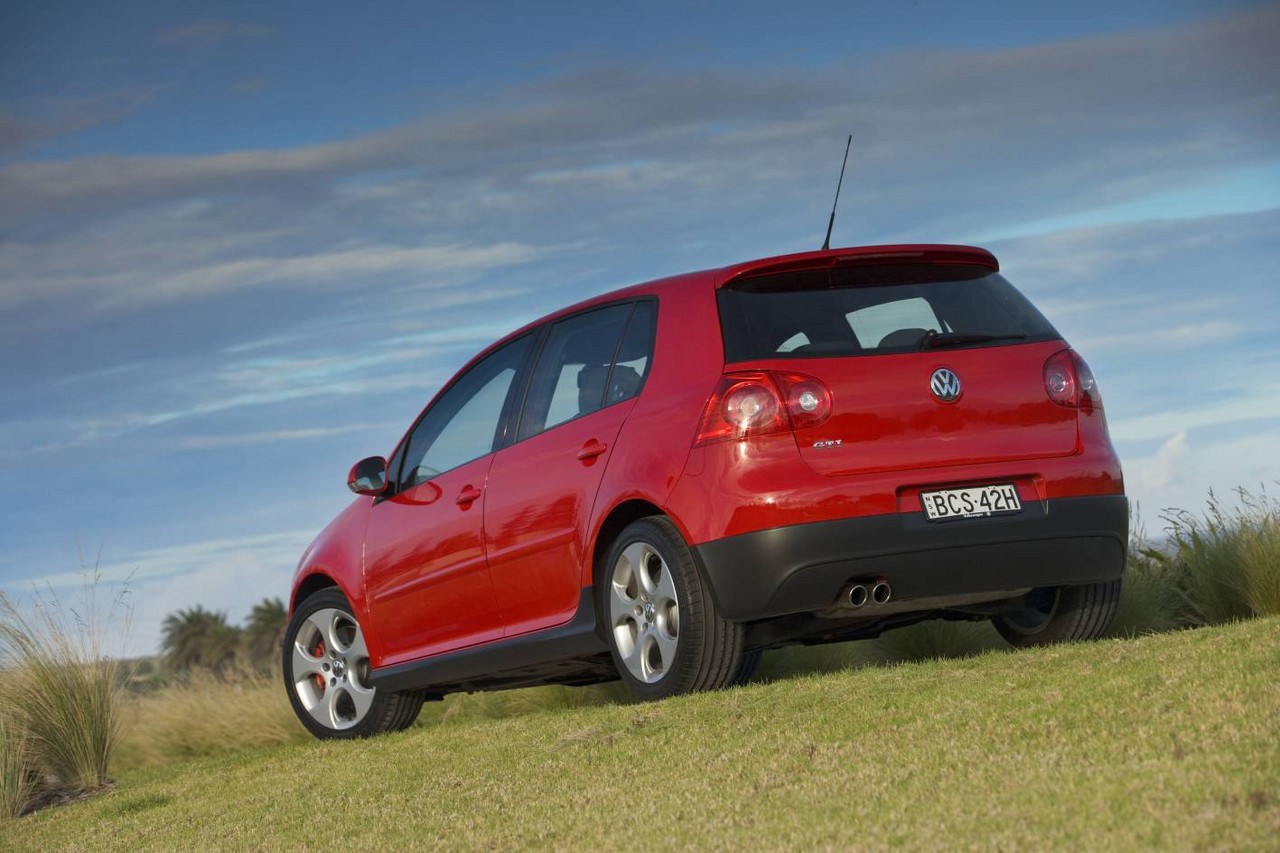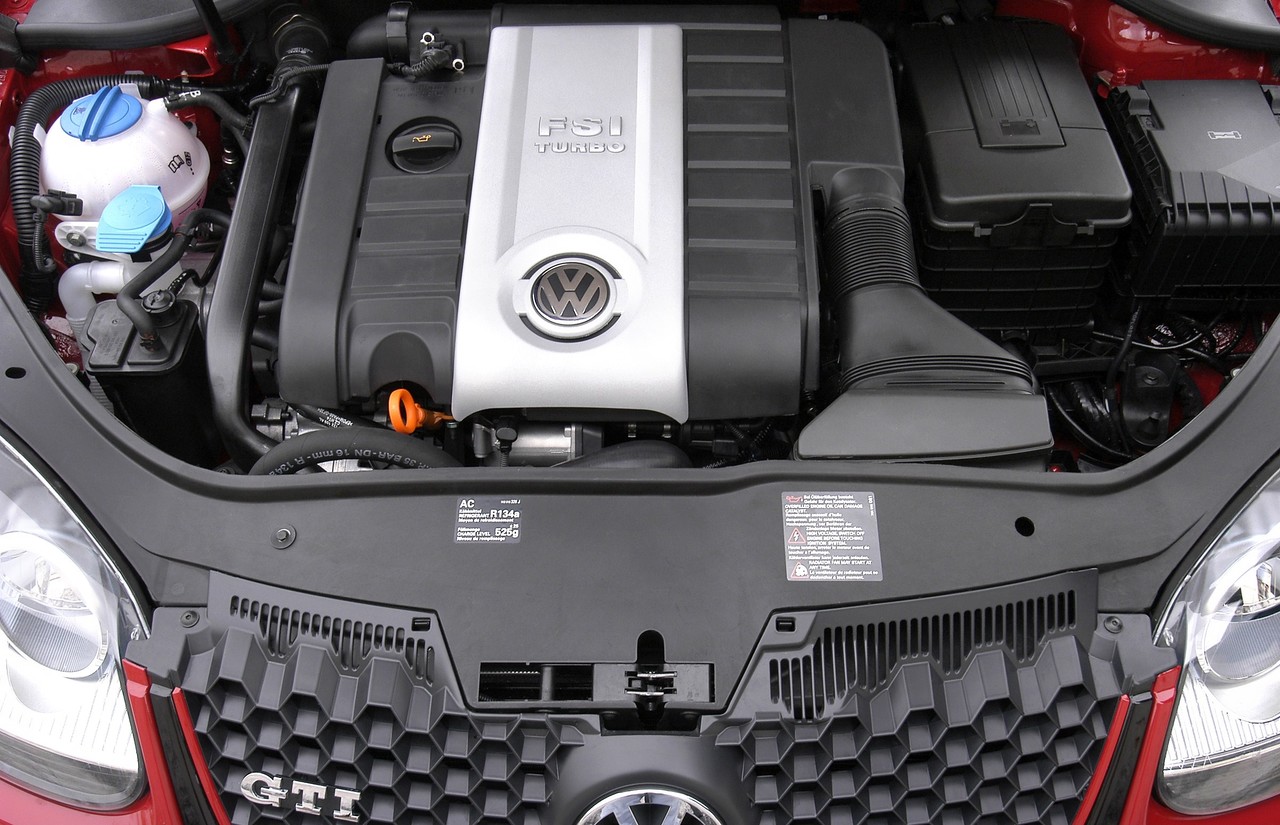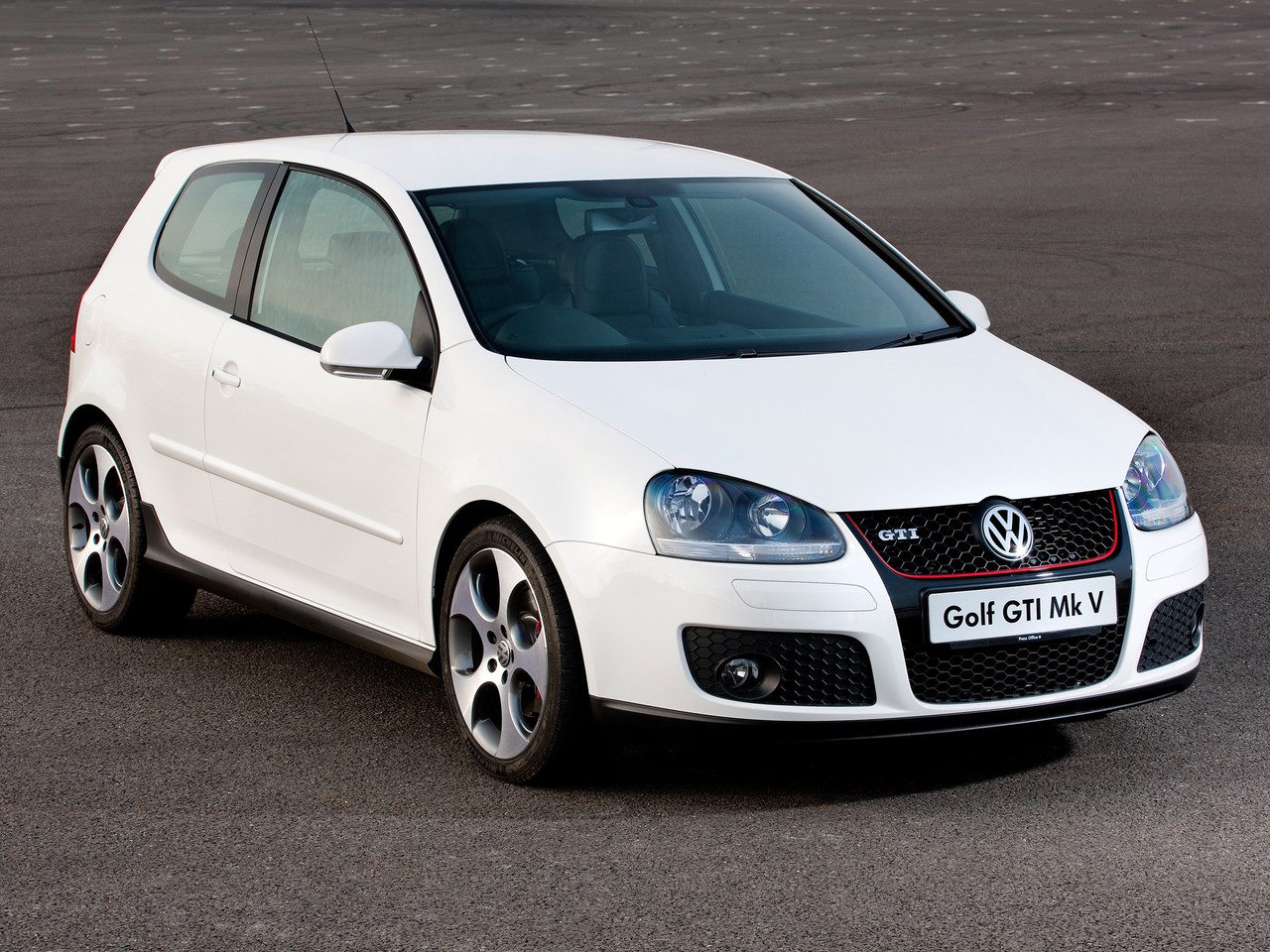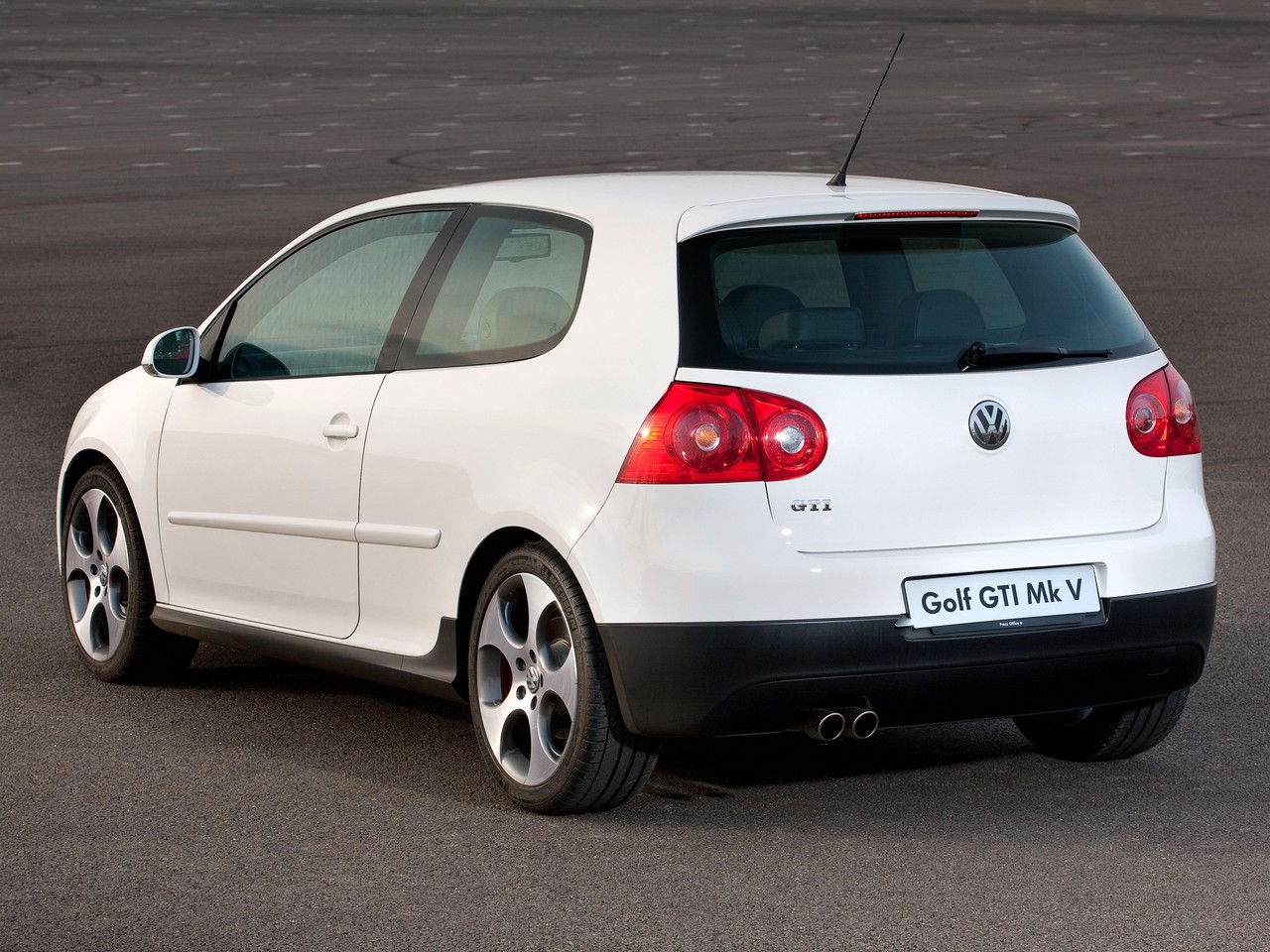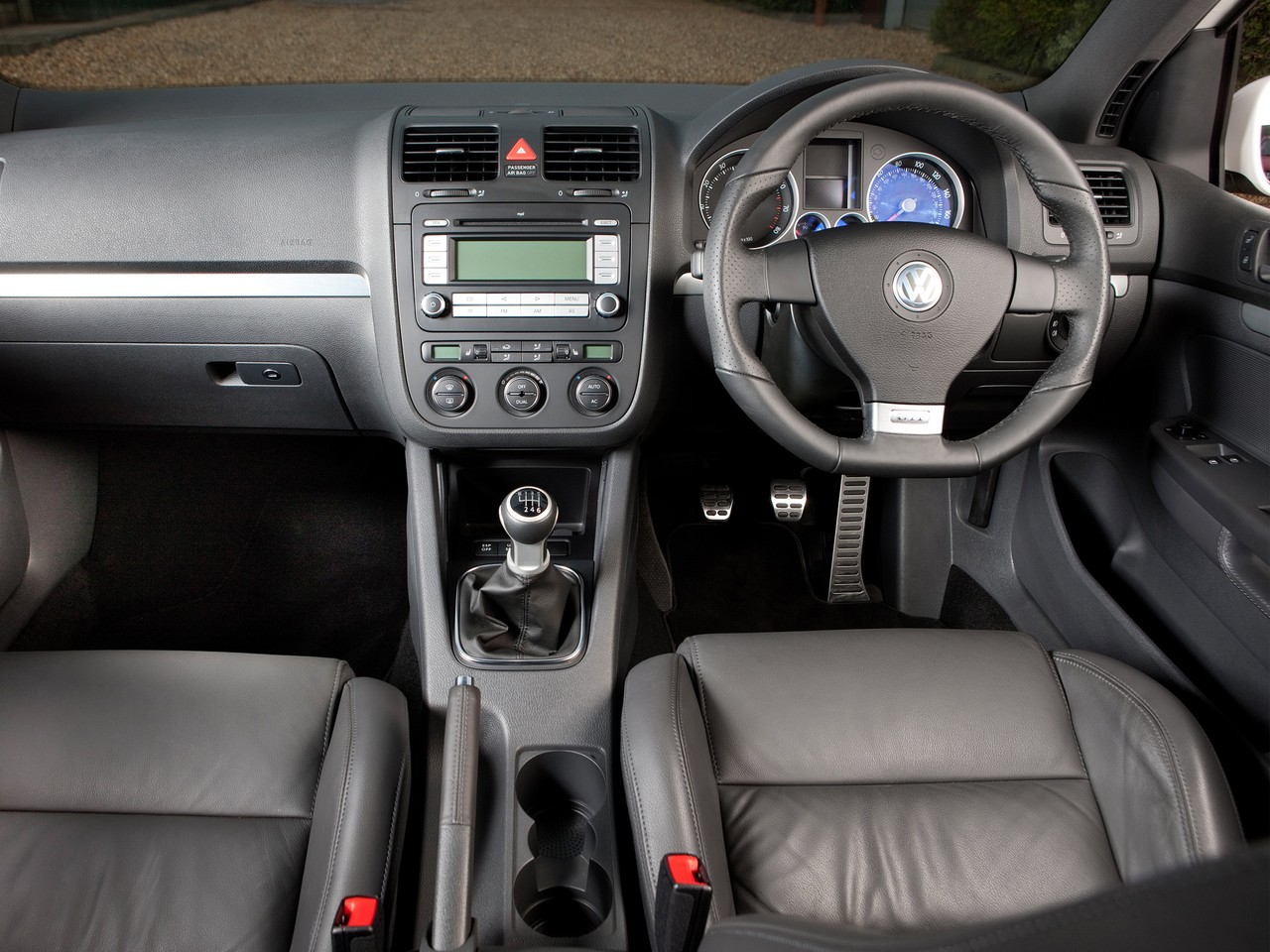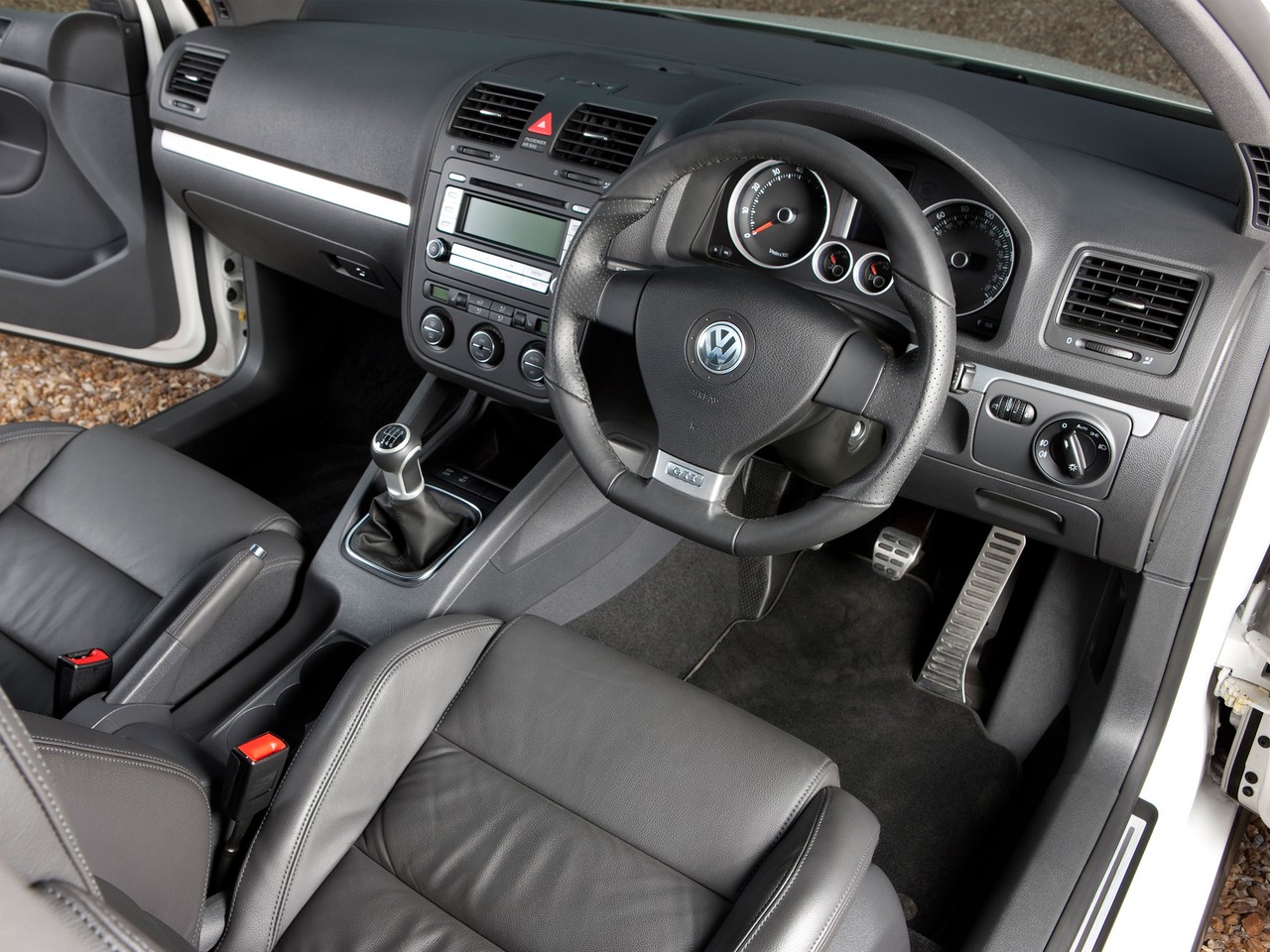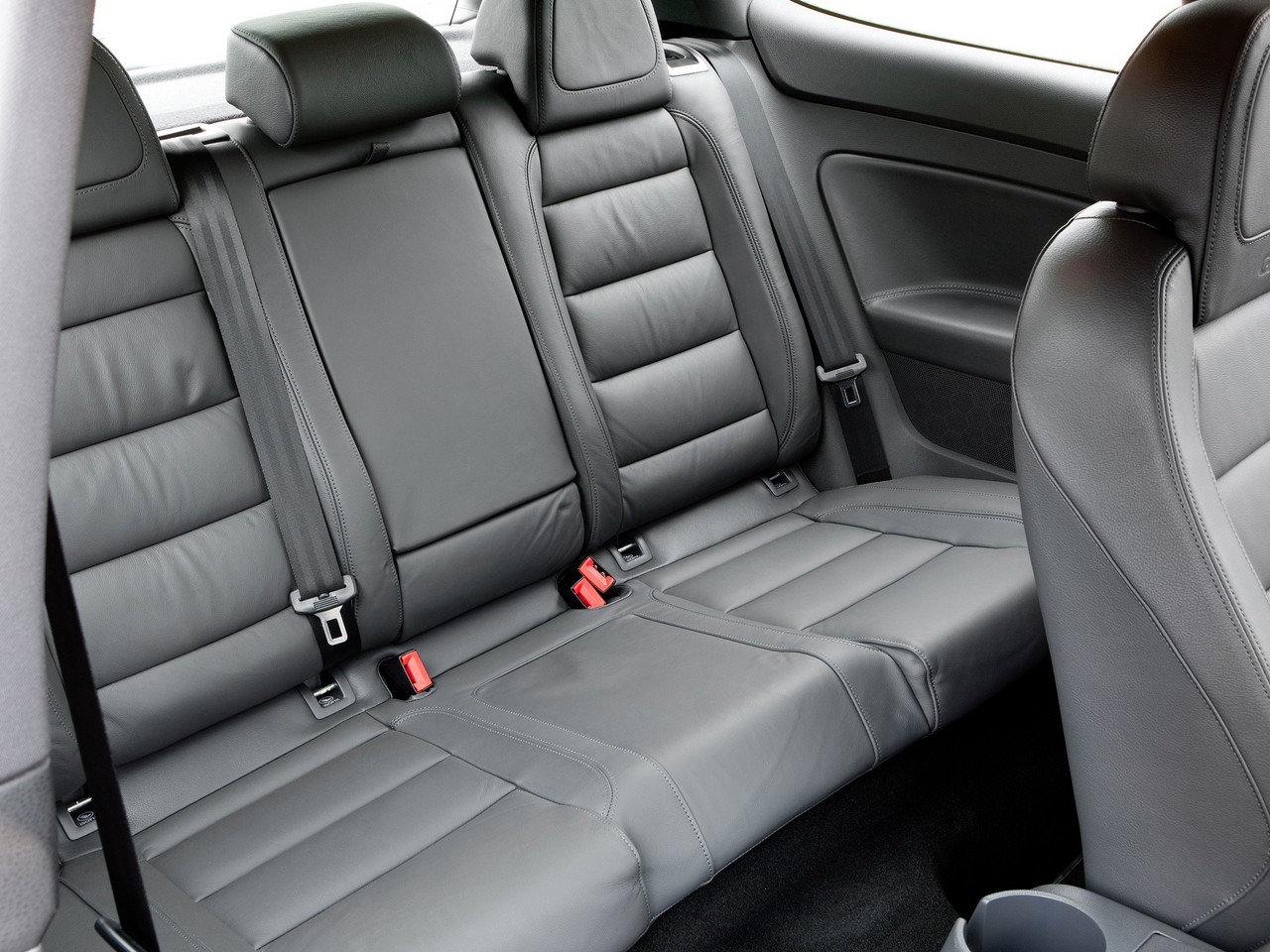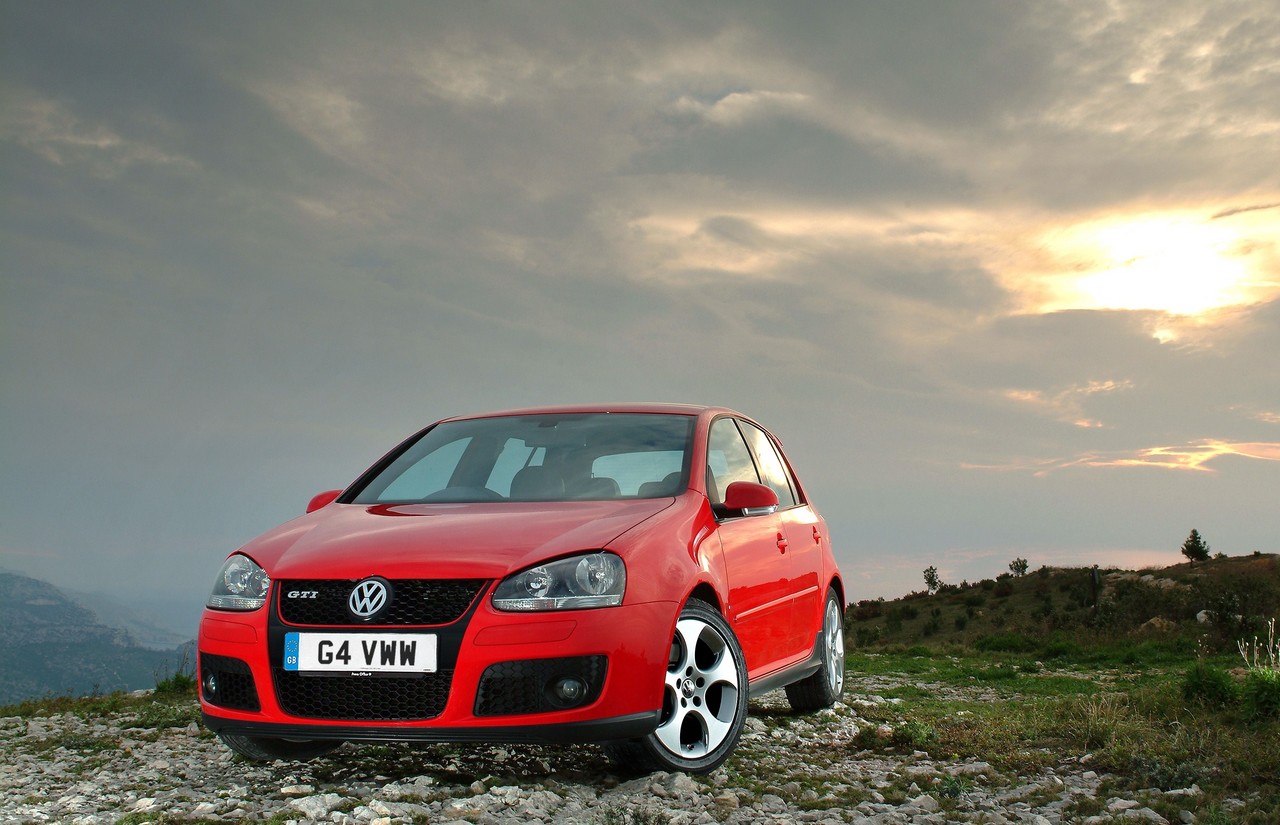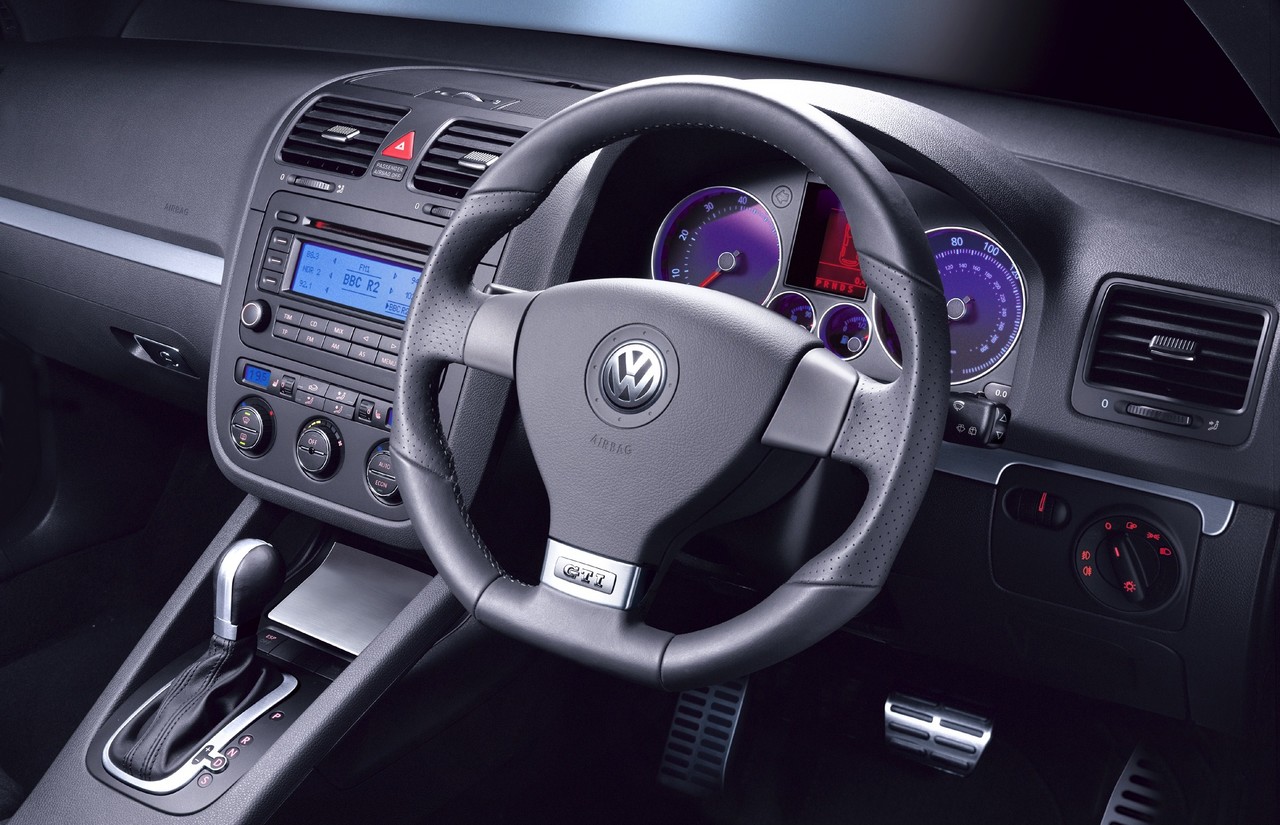
- Flexible and responsive 2.0-litre turbo petrol engine
- Precise six-speed manual transmission
- DSG provides fast gearshifts
- Excellent ride/handling balance
- Steering is accurate and direct…
- … but slightly lacking in feel
- DSG hesistant when accelerating from rest
- For DSG, reports of harsh or jerky gearshifts due to excessive wear in the bushings of solenoid valves in the Mechatronic unit
Overview
Released in Australia in May 2005, the Volkswagen Mk.5 Golf GTi was available as a three- or five-door hatchback. Manufactured in Wolfsburg, Germany, the front-wheel drive VW Mk.5 Golf GTi was powered by a 2.0-litre turbocharged four-cylinder petrol engine that was mated to either a six-speed manual or double clutch transmission (DCT or Volkswagen’s ‘DSG’).
Golf GTi: BWA EA113 engine
Based on the naturally aspirated FSI engine in the Volkswagen Mk.5 Golf , the Golf GTi’s 1984 cc BWA EA113 engine had a grey cast iron block with an 82.5 mm bore and 92.8 mm stroke, a die-forged steel crankshaft with five main bearings, a cast aluminium alloy cylinder head, direct injection (Volkswagen’s ‘Fuel Stratified Injection’ or FSI), a BorgWarner K03 turbocharger which provided peak boost pressure of 0.9 bar (13.05 psi), an intercooler, double overhead camshafts (belt and roller-chain driven), roller finger cam followers with hydraulic valve clearance compensation, four valves per cylinder, a variable intake manifold and a compression ratio of 10.5:1. Furthermore, the intake camshaft was continuously adjustable over a range of 42 degrees (relative to the crankshaft).
The Mk.5 Golf GTi could accelerate from rest to 100 km/h in 6.9 and 7.2 seconds with the DSG and manual transmissions, respectively; top speeds were 235 km/h and 233 km/h, respectively.
| Year | Engine | Trans. | Peak power | Peak torque | |
|---|---|---|---|---|---|
| Golf GTi | 2005-09 | 2.0-litre BWA turbo petrol I4 | 6sp man., 6sp DCT |
147 kW at 5100 rpm | 280 Nm at 1800-5000 rpm |
| Golf GTi Pirelli | 2008 | 2.0-litre BYD turbo petrol I4 | 6sp man., 6sp DCT |
169 kW at 5500 rpm | 300 Nm at 2200-5200 rpm |
Fuel consumption
Over the ADR 81/01 test cycle, fuel consumption for the Golf GTi was 8.0 and 8.1 litres per 100 km for models with DSG and manual transmissions, respectively. Furthermore, the Mk.5 Golf GTi required 98 RON premium unleaded petrol (PULP) and was compliant with Euro 4 emissions standards.
DSG transmission
The transversely mounted DSG unit had two wet clutches, two input shafts and two outputs shafts. In this arrangement, Clutch 1 (C1) operated the odd gears (plus reverse), while Clutch 2 (C2) operated the even gears. When driving, the next-higher gear ratio could be engaged without actually being activated. To change gears, the clutch for the current gear would open and the other clutch (for the higher gear) would engage under electrohydraulic control. Since the opening and closing actions of the two clutches overlapped, Volkswagen claimed that the system provided smooth gearshifts in less than four-hundredths of a second.
In addition to its fully automatic shift mode, the DSG had a Tiptronic function to permit manual gear selection – this could be performed via the steering wheel gearshift paddles.
Dimensions
Compared to the standard Volkswagen Mk.5 Golf , the Golf GTi was 19 mm longer (at 4216 mm) and 19 mm lower (1466 mm), though width (1759 mm) and wheelbase length (2578 mm) were unchanged; kerb weight for the Mk.5 Golf GTi was 1336 kg (for manual models). Inside, cargo space was 347 litres with the rear seats in position, though this increased to 1305 litres when they were folded flat.
Suspension
The VW Mk.5 Golf GTi had MacPherson strut front suspension (with lower A-arms and an anti-roll bar) and independent, four-link rear suspension with coil springs and an anti-roll bar. Compared to the standard Golf, the Golf GTi had firmer springs and dampers for both axles, while the stiffness rate of the rear stabiliser was increased by 20 per cent (from 25N/mm to 30N/mm).
Steering
The Volkswagen Mk.5 Golf GTi had electric, power-assisted rack-and-pinion steering. For the Golf GTi, the steering provided higher return moments as well as higher steering forces for a more direct feel.
Safety equipment
Standard safety equipment for the VW Mk.5 Golf GTi included dual front airbags, front seat-mounted side airbags, full-length curtain airbags, ABS, electronic brake force distribution, brake assist, electronic stability control (ESP), traction control (ASR), active front seat head restraints and front seatbelts with pretensioners and load limiters.
Brakes
The VW Mk.5 Golf GTi had 312 mm by 25 mm vented front brake discs and 286 mm by 11.7 mm solid rear discs. For the Golf GTi, the brake calipers were painted in red.
Euro NCAP crash testing
In Euro NCAP crash testing , a 1.6-litre Volkswagen Mk.5 Golf received a five star adult occupant protection rating with a score of 32.83 out of 37. In the frontal offset impact test, protection from serious leg injury was marginal for the driver and there was a slight risk of serious chest injury for both front occupants. In the side impact and pole tests, the Golf was awarded maximum points.
Features: Golf GTi
Standard features for the Volkswagen Golf GTi included 17 x 7.5J ‘Denver’ alloy wheels with 225/45 R17 tyres, a ten speaker sound system with a six-disc in-dash CD changer, dual-zone climate control air conditioning, cruise control, front sports seats, ‘Interlagos’ cloth upholstery, front fog lights, a rear fog lamp, automatic headlights, rain-sensing wipers, a chillable glovebox, a three-spoke steering wheel wrapped in perforated leather, 60/40 split and folding rear seats, remote central locking, power windows and heated mirrors, a height and reach adjustable steering column, height adjustable front seats, an auto-dimming rear view mirror, black headlining, front and rear carpet mats, 12 volt power sockets (centre console and luggage area), tinted windows, aluminium door sill scuff plates, vanity mirrors, illuminated footwells, cargo net, tyre pressure monitoring, a trip computer and an immobiliser.
The Golf GTi had a space-saving spare wheel.
Features: Golf GTi Pirelli
Released in October 2008, the limited-run GTi Pirelli could be identified by its Pirelli alloy wheels with Titanium-coloured paint (fitted with 225/40 Pirelli P-Zero tyres), body-coloured bumpers and side skirts, ‘Pirelli’ signature on the C-pillars and ‘Pirelli’ signature plate on the right side of the tailgate.
Inside, the Golf GTi Pirelli featured Vienna leather upholstery (for the lateral supports, seatbacks, head restraints and centre armrests), anthracite microfibre centre seat panels with an embedded tyre-style tread, yellow trim stitching (for the seats, steering wheel and parking brake grip), ‘Pirelli’ lettering for the front head restraints, power adjustable and heated front seats, rear privacy glass and all-leather centre rear armrest.
Options: Golf GTi
Extra-cost, optional features for the Golf GTi included:
- Directional bi-xenon headlights with washers;
- A power-operated glass sunroof with sunblind;
- Anthracite and Pure Beige leather seats, including front seats with heating and powered lumbar adjustment; and,
- A satellite navigation system with a colour display.
Paint colours
The Golf GTi was available in Tornado Red, Black Magic (Pearl Effect), Candy White, Reflex Silver (Metallic) and Shadow Blue (Metallic) paint finishes.
Related links
- Specifications: Volkswagen Mk.5 Golf GTi (May 2005)
- Specifications: Volkswagen Mk.5 Golf GTi Pirelli (October 2008)
- Wikipedia.org: Volkswagen Mk.5 Golf
